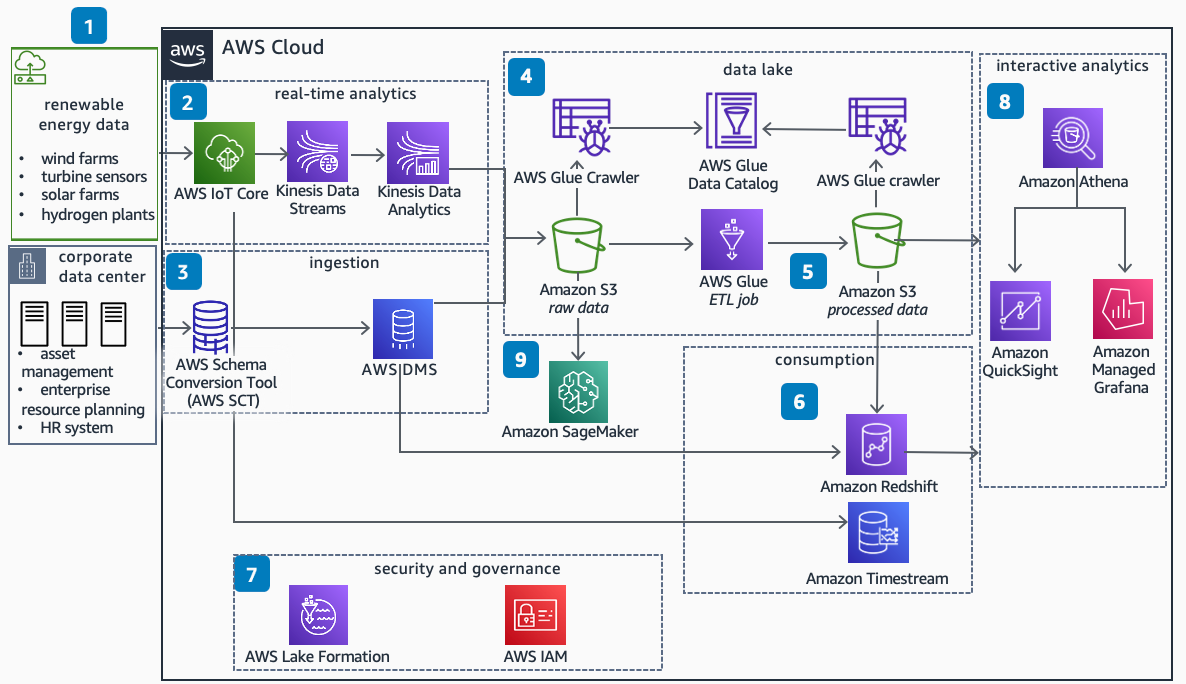Data Lake Architecture for Renewable Energy
Publication date: October 26, 2022 (Diagram history)
This architecture enables you to build a renewable energy data lake that includes telemetry data from IoT devices, and business application data for near real-time monitoring. It also enables you to visualize data and make predictions with machine learning (ML) models.
Data Lake Architecture for Renewable Energy Diagram

-
Renewable energy data is ingested into AWS IoT Core with MQ Telemetry Transport (MQTT) protocol.
-
Using AWS IoT rules engine within AWS IoT Core, telemetry data is routed to Amazon Timestream and Amazon Simple Storage Service (Amazon S3) through Amazon Kinesis Data Streams. Use Amazon Managed Service for Apache Flink to transform and analyze streaming data in near real-time.
-
The schemas for the on-premise databases are discovered and converted by the AWS Schema Conversion Tool (AWS SCT). The data is moved by AWS Database Migration Service (AWS DMS) to Amazon S3 and Amazon Redshift.
-
Data stored in Amazon S3 is crawled by AWS Glue crawler. The schemas are discovered and the AWS Glue Data Catalog is populated with this metadata.
-
AWS Glue extract, transform, load (ETL) jobs process, transform, and enrich the raw data, and output it in anAmazon S3 processed bucket.
-
Schemas and tables are then created in Amazon Redshift. Using the
COPYcommand, data is loaded into Amazon Redshift tables. Business logic data transformations can then be performed by stored procedures. -
The AWS Glue Data Catalog, AWS Lake Formation, and AWS Identity and Access Management (IAM) are used to provide centralized security and governance.
-
Amazon Athena, Amazon QuickSight, and Amazon Managed Grafana visualize data and build dashboards and reporting.
-
Use raw datasets with Amazon SageMaker AI to train and deploy machine learning models.
Download editable diagram
To customize this reference architecture diagram based on your business needs, download the ZIP file which contains an editable PowerPoint.
Create a free AWS account
Sign up for an AWS account. New accounts include 12 months of AWS Free Tier
Further reading
For additional information, refer to
Diagram history
To be notified about updates to this reference architecture diagram, subscribe to the RSS feed.
| Change | Description | Date |
|---|---|---|
Initial publication | Reference architecture diagram first published. | October 26, 2022 |
Note
To subscribe to RSS updates, you must have an RSS plugin enabled for the browser you are using.
